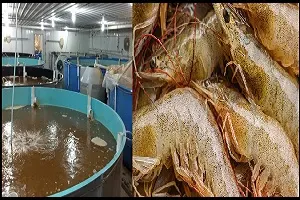Brown shrimp (Penaeus aztecus) is one of the shrimp species that possesses uniqueness and distinctiveness. Also known as brown prawn or Gulf shrimp, brown shrimp has become a favorite in the fisheries and culinary industries. Its beauty underwater and unique taste make it a preferred choice on dining tables for various seafood dishes worldwide.
Appearance and Characteristics
Brown shrimp can be recognized by its dark brown or reddish-tan color on its tough and somewhat translucent shell. It tends to be relatively large, ranging from 15 to 20 centimeters in length. In its natural habitat, brown shrimp are found in warm waters around the Gulf of Mexico, the Caribbean, and parts of the Eastern Coast of the United States.
Nutritional Value and Health Benefits
In addition to its delicious taste, brown shrimp is rich in essential nutrients. They are an excellent source of animal protein, low in saturated fat, and contain omega-3 fatty acids that are beneficial for heart health. Furthermore, brown shrimp are also rich in minerals such as zinc, phosphorus, and selenium, which support various bodily functions including the immune system and metabolism.
Delight in Culinary Creations
Brown shrimp has a firm flesh texture and a sweet taste with a hint of savory flavor. Due to this, they are often used in various seafood dishes, ranging from simple preparations like fried shrimp, grilled shrimp, to more elaborate dishes such as shrimp pasta and paella. Their ability to absorb flavors makes them a highly versatile ingredient in various recipes.
Conservation and Sustainability
Despite its increasing popularity on dinner tables, the conservation of brown shrimp is of primary concern. Overfishing practices and environmental degradation can threaten the survival of this species. Many efforts are being made to ensure sustainable brown shrimp catches, including quota regulations, advancements in sustainable fishing technologies, and strict monitoring of the waters they inhabit.
Tips for Choosing and Storing
When purchasing fresh brown shrimp, be sure to select those with clean, shiny shells and no strong fishy odor. Store brown shrimp in the refrigerator for no more than one or two days to ensure freshness. For frozen shrimp, be sure to freeze them immediately after purchase and store them in the freezer to maintain their quality.
Guide to Brown Shrimp Farming
Complete Guide to Brown Shrimp Farming, among others:
1. Initial Preparation
- Determine the type of brown shrimp you want to farm. Make sure to choose healthy shrimp from a reliable source.
- Prepare a container or pond for cultivating brown shrimp. Ponds can be earthen ponds or tarpaulin ponds equipped with a water circulation system.
- Ensure access to clean freshwater and clean seawater. The water should be free from harmful substances such as chlorine or other pollutants.
- Prepare healthy and high-quality shrimp feed. Feed can consist of plankton, shrimp pellets, or a mixture of shrimp-specific foods available in the market.
2. Pond Preparation
- Clean the pond thoroughly before adding shrimp. Make sure there is no dirt or other harmful substances in the pond.
- Fill the pond with clean freshwater or seawater. Ensure the salinity level and water temperature are suitable for brown shrimp.
- Ensure the pond has a good circulation system to maintain water quality and provide shrimp with an adequate oxygen supply.
3. Introducing Shrimp to the Pond
- Introduce shrimp to the pond gradually. Avoid introducing all the shrimp at once to prevent stress or excessive competition among them.
- Monitor the condition of the shrimp after introducing them to the pond. Ensure they adapt well to the new environment.
4. Daily Care
- Provide feed regularly according to the shrimp's needs. Ensure the amount of feed given is neither excessive nor insufficient.
- Monitor water quality regularly. Ensure pH, salinity, temperature, and oxygen levels in the water remain within the ideal range for shrimp growth.
- Clean the pond periodically to prevent the accumulation of dirt or other harmful substances.
5. Environmental Maintenance
- Protect the pond from environmental factors that may harm shrimp, such as water pollution, predators, or drastic temperature changes.
- Ensure shrimp receive adequate exposure to light, but avoid excessive direct sunlight exposure.
- Monitor shrimp condition regularly to identify any health or environmental issues that may arise.
6. Harvesting
- Choose the right time to harvest shrimp. Typically, brown shrimp can be harvested after reaching the desired size or a certain age.
- Use appropriate tools to facilitate the harvesting process, such as nets or other filtering equipment.
- Store harvested shrimp properly according to the appropriate storage instructions.
By following this guide and providing proper care, you can succeed in brown shrimp farming. However, it's important to note that each location and environmental condition has unique characteristics, so you may need to adjust farming methods according to the specific conditions in your area.
Conclusion
Brown shrimp is a marine marvel that not only tantalizes the taste buds with its delicious flavor but also provides a range of valuable health benefits. With proper conservation, we can continue to enjoy the deliciousness and beauty of brown shrimp while maintaining the delicate balance of marine ecosystems crucial for life on this planet. As one of the many valuable seafood ingredients, brown shrimp deserves appreciation and careful stewardship for generations to come.
That is the article Getting to Know Brown Shrimp: A Culinary Delight from the Sea. If there are any deficiencies or errors in writing this article, Baraja Farm express their deepest apologies. Please leave a wise message in the comments column provided. Thank you for visiting, hopefully it's useful.
Other reading materials, can help with school assignments, click Pustaka Pengetahuan
To increase insight and knowledge, please click Berbagai Reviews
For tutorial on how to cultivate, please click Baraja Farm Channel
Social media please click facebook


.jpg)





0 Komentar